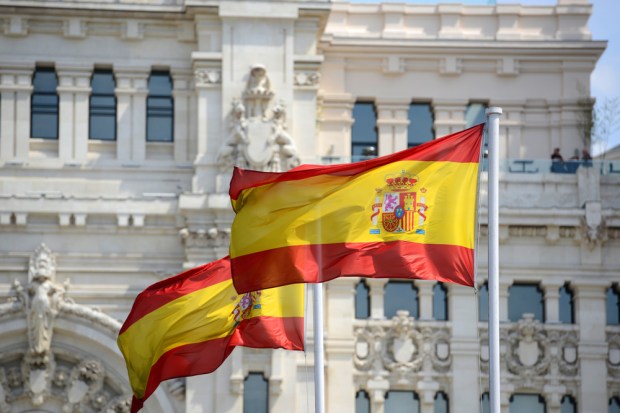For Payments In Spain, Cash Still Reigns

Despite broader adoption of newer payment methods, PYMNTS’ research finds that Spaniards are still committed to spending over €254 billion in cash annually — and mostly on everyday purchases. The latest PYMNTS Global Cash Index™, a Cardtronics collaboration, looks at the state of cash usage in Spain. Plus, an interview with Helena Tejero, chief cashier at Banco de España, on why cash in this country is still red hot, along with 260 new data points on cash usage in the Index.
As the calendar turns to 2018, billions of people around the world are kicking out the old, and welcoming in the new — whether that means resolutions of dropping old habits and changing outdated behaviors or casting aside obsolete technology for new innovations.
In Spain, however, some old habits die hard, and that includes the country’s preference for physical currency. No matter what new payments tech comes along — or how convenient or secure it claims to be — Spain still likes to pay with cash. Other nations may have been won over by technology, and the Spanish government has made efforts to limit cash usage by consumers, but Spain’s population has made its preferences known.
As it turns out, Spaniards are reluctant to consider alternatives to cash when making their daily purchases.
According to Helena Tejero, chief cashier at Banco de España, Spanish citizens’ cash usage represents a pattern that is unlikely to change in this New Year — or anytime soon, for that matter. Tejero recently spoke with PYMNTS about the factors prompting Spaniards to keep cash circulating. (Disclaimer: Tejero spoke as a cash expert, not as a spokesperson for Banco de España. Banco de España’s official position is stated in its publications).
Keeping cash thriving in Spain
Today, the country’s 46.56 million citizens have access to a host of payment methods, including peer-to-peer (P2P) services, debit cards and credit cards in addition to cash. But, as Tejero noted, one particular method of payment clearly stands out from the pack.
The reasons for cash’s ongoing stay as the top payment choice for Spanish citizens may vary, but it’s the comfort in using the traditional method that many value most.
“Payments in Spain are made by habit,” Tejero said. “In surveys we produce each year, citizens tell us they prefer cash for the convenience and control they have over their spending.”
Cash is often used for everyday purchases and items under €10 — such as coffee, bread or other small meals — and is particularly popular among street-level vendors. As a result, these low-ticket purchases appear to be going a long way toward helping cash maintain its grip as a powerful force in the nation’s financial system. In fact, payment options like debit and credit cards are often not accepted for transactions valued under €6 for example at some of Spain’s pharmacies, Tejero explained.
“Cash is the preferred instrument of payment, but the value of payments is quite low in Spain because it is mainly used in small transactions,” she said.
New payment methods lag, but offer new cash opportunities
Even those options appear to be reinforcing their preference for cash, however.
Spain has a higher rural area than nearby European nations, and merchants in such communities do not always accept card-based payment methods for low-value transactions, she explained.
“More retailers accept other means of payments, but not 100 percent,” Tejero said. “If you want to buy a small item [such as a] day-to-day purchase, you might find some retailers do not accept credit cards.”
Cash, on the other hand, allows parties to settle any kind of financial transaction. As a result, Spaniards living in rural areas tend to rely on it to make payments instead of alternate payment options. Even when this population does use debit cards, though, it often does so to get more cash.
Even with growth in infrastructure, though, Spain’s retail and services industries are working to meet citizens’ demand for cash. For example, Tejero noted some merchants allow consumers to make cashback withdrawals when they purchase using debit cards, as many do in the U.S.
“These services are in their infancy stage, but we have seen a lot of interest in promoting those types of cashback services,” she said.
Spain’s shifting financial sands
As 2018 begins, Spain’s citizens still appear to be unwilling to abandon cash when it comes to making payments, despite notable developments that have made it more challenging as a payment option.
For example, several bank branches shuttered following the 2008 financial crisis, Tejero recalled. As a result, Spain’s network of ATMs shrank from roughly 60,000 in 2008 to approximately 50,000 in 2016.
That shuttering of bank branches led to a noticeable drop in over the counter (OTC) cash withdrawals. Despite the reduction in ATMs, though, Tejero noted ATM usage and the value of cash withdrawals has remained fairly stable.
In addition, with fewer bank branches at which to conduct transactions, Spanish citizens now appear more likely to turn to local ATMs to withdraw cash. This also appears to be helping to make possible the use of cash in the nation.
Meanwhile, the Spanish government has taken its own steps to reduce the influence of cash on the country’s financial ecosystem. It imposed a limit of €2,500 per transaction as part of a crackdown on tax evaders in 2012. Four years later, it considered imposing stricter rules to limit cash per transaction to €1,000. This change has not gone into effect, however, and it’s currently unclear if or when the government will move to lower the cash ceiling.
But, because most cash transactions average approximately €10, far below the ceiling of €2,500 cap, Tejero said the cash limit does not appear to be reducing Spain’s physical currency usage on daily purchases.
“There is no evidence that the ceiling is affecting the use of cash,” she expressed.
While Spain’s government might continue to attempt to rein in cash’s influence, and new payment methods like payment cards and P2P services may prompt citizens to take up digital and card-based alternatives, Tejero believes it will take a long time to diminish the role cash plays in Spaniards’ daily lives.
“Lots has been written about the disappearance of cash, but there will be always a demand for cash in the world,” Tejero said. “In Spain, we don’t see the use of cash disappearing in the near future.”
About the Index
The PYMNTS.com Global Cash Index™, a Cardtronics collaboration, focuses on the use of cash for making payments, and as a payment method that equally plays a role with cards, checks, direct debit and other methods of settling up between consumers and businesses. Unlike most reported estimates of cash, our proprietary data analysis focuses on the use of cash for making payments rather than hoarding.

